BDK Symposium: Translating the Abhidharmakośa

We are delighted to host this virtual symposium entitled:
The Challenges and Joys of Translating the Abhidharmakośa-bhāṣya (Apidamo jushe lun) from Chinese into English
An Inaugural Project by an International Team of Buddhist Scholars
About this event
The Abhidharmakośa-bhāṣya is one of the most influential treatises in Indian Buddhism and the most well researched non-Mahayana treatise in East Asia. We are working on an English translation of the Chinese text that Xuanzang (玄奘, 602–664 BCE) and his team translated as part of the national project during the Tang Dynasty. While there exists a French translation by Louis de la Vallee Poussin (1869-1938), and English translations based on it, we are not aware of any complete English translation directly from the Chinese text. Translators from Italy, Thailand, Taiwan, and the United States will share the challenges and joys of their work. Their work is part of the ongoing English Tripitaka Translation Project of the Society for the Promotion of Buddhism (BDK Japan and BDK America), which seeks to translate 139 major texts from the Chinese Buddhist Canon.
Kenneth K. Tanaka, Professor Emeritus, Musashino University, Tokyo
Introducing The BDK English Tripiṭaka Translation Project
In January 1982, Dr. Yehan Numata, the founder of Bukkyō Dendō Kyōkai (BDK or Society for the Promotion of Buddhism), initiated the monumental project of translating the Taishō edition of the Chinese Buddhist Canon. Initially 139 texts were chosen to make up the first series of the project. Translations are carried out by specialists from around the world as in the case of the present Abhidharmakośa text. As of today, the project has completed about 70 percent of the 7,185 Taishō pages of the texts selected. All the translated texts can be downloaded free of charge in their pdf format from the BDK website.
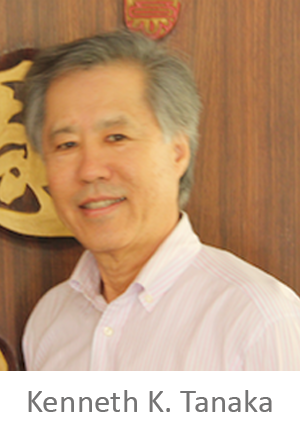 Kenneth Tanaka received his education at Stanford (B.A.), a temple in Thailand, Institute of Buddhist Studies, Berkeley (M.A.), Tokyo University (M.A.), and the Universiy of California, Berkeley (Ph.D.). After serving as Associate Professor and Assistant Dean at IBS for 11 years, and a resident priest for 3 years in a Shin temple in California, he taught at Musashino University for 20 years. He is the former President of the International Association of Shin Buddhist Studies (IASBS). His publications include The Dawn of Chinese Pure Land Buddhist Doctrine, Ocean: An Introduction to Jodo Shinshu Buddhism in America, and books in Japanese on Shin and American Buddhism. His books have been translated into Japanese, Chinese, and Portuguese. He is the 2017 recipient of the 27th Nakamura Hajime Eastern Study Prize, awarded by the Eastern Institute and the Indian Embassy, Tokyo.
Kenneth Tanaka received his education at Stanford (B.A.), a temple in Thailand, Institute of Buddhist Studies, Berkeley (M.A.), Tokyo University (M.A.), and the Universiy of California, Berkeley (Ph.D.). After serving as Associate Professor and Assistant Dean at IBS for 11 years, and a resident priest for 3 years in a Shin temple in California, he taught at Musashino University for 20 years. He is the former President of the International Association of Shin Buddhist Studies (IASBS). His publications include The Dawn of Chinese Pure Land Buddhist Doctrine, Ocean: An Introduction to Jodo Shinshu Buddhism in America, and books in Japanese on Shin and American Buddhism. His books have been translated into Japanese, Chinese, and Portuguese. He is the 2017 recipient of the 27th Nakamura Hajime Eastern Study Prize, awarded by the Eastern Institute and the Indian Embassy, Tokyo.
Bibek P. Sharma, PhD Candidate, Faculty of Social Science and Humanities, Mahidol University, Thailand
Introduction to Abhidharmakośa: Author, Chapters, its Place in Abhidharma Literature and Subsequent Indian Commentarial Tradition
The features of the Vasubandhu’s Abhidharmakośabhāṣya (hereafter AKBh), its style, structure, etc., are not entirely novel. The features of this seminal work lead us to to a long Abhidharma commentarial “tradition” (paraṃparā) in use among the Sarvāstivādin Buddhist school. This presentation particularly focuses on the Abhidharma literature among Sarvāstivādins, the post AKBh sub-commentarial works, and the commentarial dexterity required to reveal the meaning of the root text. Yaśomitra, author of the only surviving Sanskrit commentary, the Sphuṭārthā Abhidharmakośavyākhyā (hereafter AKVy), resorts to various methods to elucidate Vasubandhu’s intended meaning. One of the features of his commentarial policy is the application of Sanskrit vyākaraṇa to elucidate and justify Vasubandhu’s usage of grammar. These commentarial nuances as demonstrated in sub-commentaries such as the AKVy are crucial to understand the Sanskrit root texts and to translate them into modern languages.
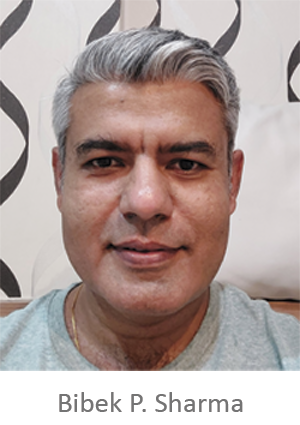 Bibek P. Sharma is a PhD candidate in the Faculty of Social Science and Humanities, Mahidol University, Thailand. He is currently working on Yaśomitra’s Abhidharmakośavyākhyā to complete his PhD thesis. He reads Chinese, Sanskrit, Hindi, French, and Pāli apart from speaking his own mother tongue of Nepali.
Bibek P. Sharma is a PhD candidate in the Faculty of Social Science and Humanities, Mahidol University, Thailand. He is currently working on Yaśomitra’s Abhidharmakośavyākhyā to complete his PhD thesis. He reads Chinese, Sanskrit, Hindi, French, and Pāli apart from speaking his own mother tongue of Nepali.
Jeffrey Kotyk, Research Associate, University of Bologna
Abhidharmakośa as Reflection of Cosmology in Earlier Āgama and Nikāya Buddhism
The world of Mt. Meru and the Four Continents is the foundational worldview of the Buddhists in ancient India and it remained largely unchanged in later centuries. This talk will discuss how the Abhidharmakośa builds upon and reflects the cosmology of earlier Buddhist literature, including the physical layout of the world as well as the numerous levels of beings (humans, devas, asuras, etc.) who inhabit it, to show that Vasubandhu inherited this vision of the universe and in large part faithfully reproduced it, albeit with some minor differences.
 Jeffrey Kotyk is presently a Research Associate at the University of Bologna, Department of Cultural Heritage, at the Ravenna campus in Italy. He is presently researching Sino-Iranian and Indo-Iranian cultural and religious connections.
Jeffrey Kotyk is presently a Research Associate at the University of Bologna, Department of Cultural Heritage, at the Ravenna campus in Italy. He is presently researching Sino-Iranian and Indo-Iranian cultural and religious connections.
Bruce C. Williams , C. V. Starr East Asian Library, University of California, Berkeley, retired
The Puzzle of Xuanzang’s Non-Mahayana Abhidharma Corpus
Among Xuanzang’s translations there is a virtually compete corpus of the important Sarvāstivāda Abhidharma texts, the only non-Mahāyāna texts that he translated. Why? The answer may lie not in its non-Mahāyāna affiliations, but rather in the role of Abhidharma as a shared framework of debate among Indian Buddhists, non-Mahāyāna and Mahāyāna (e.g., Yogācāra) alike. This would account for the shared terminology, lists, categories and certain issues between the Sarvāstivāda and Yogācāra. Yogācāra also shares the gradualist Sarvāstivāda paradigm, especially on issues related to the ‘Path.’ This may suggest, in part, the importance of Saṃghabhadra’s Nyāyānusāra as a rejoinder to the critiques in Vasubandhu’s Abhidharmakośabhāṣya. Vasubandhu’s work is the lynchpin that connects all these: it is a concise summary of the mature Sarvāstivādin position on the one hand; on the other its Sautrāntika criticisms either put it on a trajectory towards some of the mature Yogācāra positions of Asanga’s Yogācārabhūmiśāstra or emphasize the gradualist filiations between the Yogācāra and Sarvāstivāda. Aspects of the ‘Path of Seeing’ may be taken as an example.
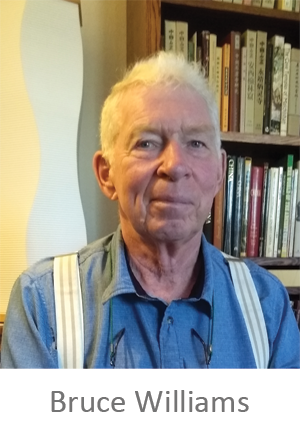 Bruce C. Williams’ research interests are in Medieval Chinese Buddhism with a focus on meditation and meditative rituals, their narrative frameworks, regional developments, and historical contexts. His interest in Abhidharma stems from his cross training in Indian Buddhism, especially in Sarvāstivāda Abhidharma.
Bruce C. Williams’ research interests are in Medieval Chinese Buddhism with a focus on meditation and meditative rituals, their narrative frameworks, regional developments, and historical contexts. His interest in Abhidharma stems from his cross training in Indian Buddhism, especially in Sarvāstivāda Abhidharma.
Ching Keng, Associate Professor, Department of Philosophy, National Taiwan University
The Transmission of the Abhidharma Sources by Xuanzang and His Disciples
This paper aims to provide a brief survey of the reception of the Abhidharmakośabhāṣya in China, mostly mediated by Xuanzang’s Chinese translations of Abhidharma sources and commentaries on the Abhidharmakośabhāṣya by Xuanzang’s disciples. In addition, Xuanzang also translated the main works of the Sarvāstivāda Abhidharma sources, together with Saṃghabhadra’s Nyāyānusāra, which often criticized the positions held by the Abhidharmakośabhāṣya. I will provide a few examples about how these Chinese sources may help us better understand key Abhidharma notions and debates in the hope of drawing more attention to the value of the Chinese Abhidharma sources.
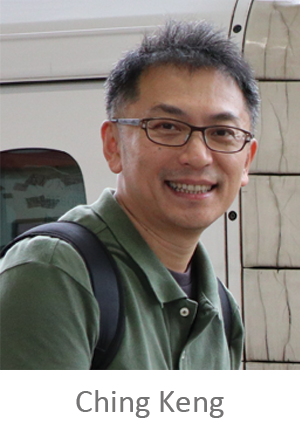 Ching Keng is Associate Professor in the Department of Philosophy, National Taiwan University. His fields of research include Yogācāra, Tathāgatagarbha, and Abhidharma thought in India and China. His current research explores how, under various Buddhist cognitive frameworks, mental consciousness and sensory consciousness work together. He is the author of Toward a New Image of Paramartha: Yogacara and Tathagatagarbha Buddhism Revisited (Bloomsbury 2022) and a co-editor of Buddhist Philosophy of Consciousness: Tradition and Dialogue (Brill 2020).
Ching Keng is Associate Professor in the Department of Philosophy, National Taiwan University. His fields of research include Yogācāra, Tathāgatagarbha, and Abhidharma thought in India and China. His current research explores how, under various Buddhist cognitive frameworks, mental consciousness and sensory consciousness work together. He is the author of Toward a New Image of Paramartha: Yogacara and Tathagatagarbha Buddhism Revisited (Bloomsbury 2022) and a co-editor of Buddhist Philosophy of Consciousness: Tradition and Dialogue (Brill 2020).
Weijen Teng, Associate Professor, Department of Buddhist Studies, Dharma Drum Institute of Liberal Arts
A Comparison of Xuanzang and Paramartha’s Translations of Grammatical Elements in the Abhidharmakośabhāṣya
The study of medieval Chinese translations of Buddhist Indic texts usually focuses on semantic and syntactic aspects of the translations because they reflect how the meanings of the original texts could be understood by the translator and help evaluate the (mis)understanding of their readers. In this study, I examine Chinese Buddhist translations differently by focusing on Xuanzang and Paramartha’s translations of the Sanskrit grammatical elements found in the Abhidharmakośabhāṣya and examining whether their differences affect the understanding of the text by both translators as well as readers. The grammatical elements to be studied in this paper include, but are not limited to, verb tenses, case-endings (vibhakti), and compounds (samāsa).
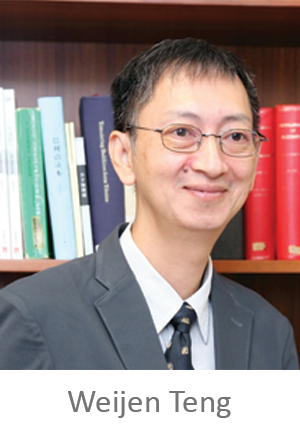 Weijen Teng received his Ph.D. degree in Religious Studies from Harvard University. He is currently a faculty member of Dharma Drum Institute of Liberal Arts, Taiwan, and serves as the Head of the Department of Buddhist Studies. His research interests include Buddhist theories of meditation, intellectual history of Chinese Buddhism, and more recently Buddhism and modernity.
Weijen Teng received his Ph.D. degree in Religious Studies from Harvard University. He is currently a faculty member of Dharma Drum Institute of Liberal Arts, Taiwan, and serves as the Head of the Department of Buddhist Studies. His research interests include Buddhist theories of meditation, intellectual history of Chinese Buddhism, and more recently Buddhism and modernity.
Please follow the link to register for this event: Zoom Registration Link










